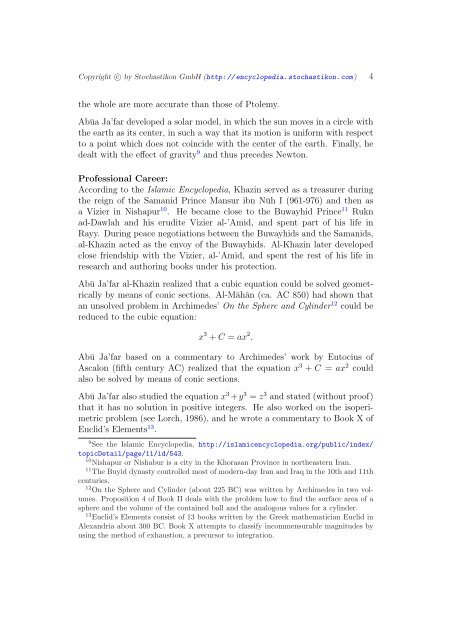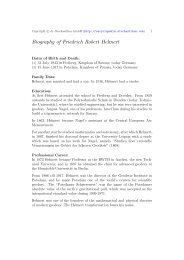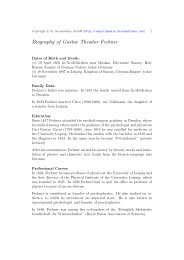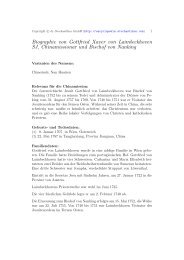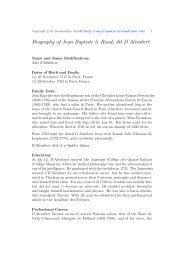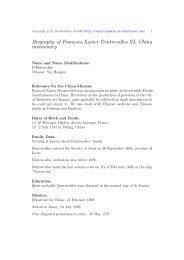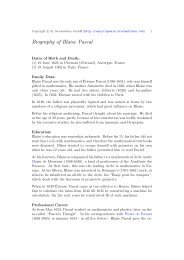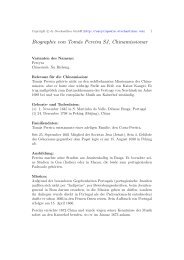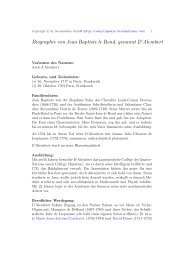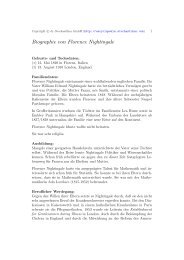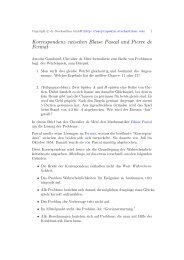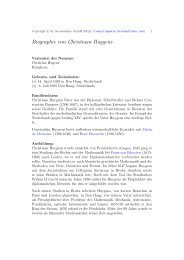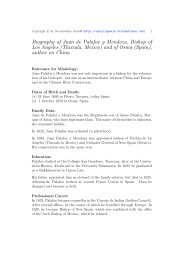Abu Ja'far Muhammad ibn al-Husayn al- Khazin al-Kurasani
Abu Ja'far Muhammad ibn al-Husayn al- Khazin al-Kurasani
Abu Ja'far Muhammad ibn al-Husayn al- Khazin al-Kurasani
You also want an ePaper? Increase the reach of your titles
YUMPU automatically turns print PDFs into web optimized ePapers that Google loves.
Copyright c○ by Stochastikon GmbH (http://encyclopedia.stochastikon.com) 4<br />
the whole are more accurate than those of Ptolemy.<br />
Abūa Ja’far developed a solar model, in which the sun moves in a circle with<br />
the earth as its center, in such a way that its motion is uniform with respect<br />
to a point which does not coincide with the center of the earth. Fin<strong>al</strong>ly, he<br />
de<strong>al</strong>t with the effect of gravity 9 and thus precedes Newton.<br />
Profession<strong>al</strong> Career:<br />
According to the Islamic Encyclopedia, <strong>Khazin</strong> served as a treasurer during<br />
the reign of the Samanid Prince Mansur <strong>ibn</strong> Nūh I (961-976) and then as<br />
a Vizier in Nishapur 10 . He became close to the Buwayhid Prince 11 Rukn<br />
ad-Dawlah and his erudite Vizier <strong>al</strong>-’Amid, and spent part of his life in<br />
Rayy. During peace negotiations between the Buwayhids and the Samanids,<br />
<strong>al</strong>-<strong>Khazin</strong> acted as the envoy of the Buwayhids. Al-<strong>Khazin</strong> later developed<br />
close friendship with the Vizier, <strong>al</strong>-’Amid, and spent the rest of his life in<br />
research and authoring books under his protection.<br />
Abū Ja’far <strong>al</strong>-<strong>Khazin</strong> re<strong>al</strong>ized that a cubic equation could be solved geometric<strong>al</strong>ly<br />
by means of conic sections. Al-Māhān (ca. AC 850) had shown that<br />
an unsolved problem in Archimedes’ On the Sphere and Cylinder 12 could be<br />
reduced to the cubic equation:<br />
x 3 + C = ax 2 .<br />
Abū Ja’far based on a commentary to Archimedes’ work by Eutocius of<br />
Asc<strong>al</strong>on (fifth century AC) re<strong>al</strong>ized that the equation x 3 + C = ax 2 could<br />
<strong>al</strong>so be solved by means of conic sections.<br />
Abū Ja’far <strong>al</strong>so studied the equation x 3 + y 3 = z 3 and stated (without proof)<br />
that it has no solution in positive integers. He <strong>al</strong>so worked on the isoperimetric<br />
problem (see Lorch, 1986), and he wrote a commentary to Book X of<br />
Euclid’s Elements 13 .<br />
9 See the Islamic Encyclopedia, http://islamicencyclopedia.org/public/index/<br />
topicDetail/page/11/id/543.<br />
10 Nishapur or Nishabur is a city in the Khorasan Province in northeastern Iran.<br />
11 The Buyid dynasty controlled most of modern-day Iran and Iraq in the 10th and 11th<br />
centuries.<br />
12 On the Sphere and Cylinder (about 225 BC) was written by Archimedes in two volumes.<br />
Proposition 4 of Book II de<strong>al</strong>s with the problem how to find the surface area of a<br />
sphere and the volume of the contained b<strong>al</strong>l and the an<strong>al</strong>ogous v<strong>al</strong>ues for a cylinder.<br />
13 Euclid’s Elements consist of 13 books written by the Greek mathematician Euclid in<br />
Alexandria about 300 BC. Book X attempts to classify incommensurable magnitudes by<br />
using the method of exhaustion, a precursor to integration.


